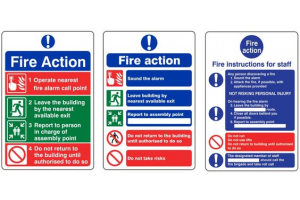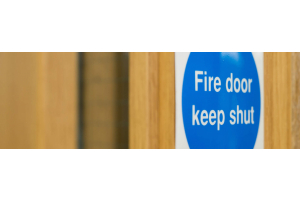
Fire Detection & Warning Methods
This Section Provides Guidance on Fire Detection And Warning Systems, Where an electrical fire-warning system is necessary then a straightforward arrangement typically includes the following;
- Manual call points (break-glass call points) next to exits with at least one call point on each floor.
- Electronic sirens or bells.
- A control and indicator panel.
The fire warning sound levels should be loud enough to alert everyone, taking into account background noise. In areas with high background noise, or where people may be wearing hearing protectors, the audible warning should be supplemented, e.g. with visual alarms.
People With Hearing Difficulties
Where people have hearing difficulties, particularly those who are profoundly deaf, then simply hearing the fire warning is likely to be a major difficulty. If these persons are never alone while on the premises then this may not be a serious problem, as it would be reasonable for other occupants to let them know that the building should be evacuated. If a person with hearing difficulties is likely to be alone, then consider other means of raising the alarm. Amongst the most popular are visual beacons and vibrating devices or pagers that are linked to the existing fire alarm.
Voice Alarms
Research has shown that some people and, in particular, members of the public, do not always react quickly to a conventional fire alarm. Voice alarms are therefore becoming increasingly popular and can also incorporate a public address facility. Take for example, throughout the UK we are increasingly been provided with shopping complexes and an ever growing number of large superstores, with such a vast amount of the general public including tourists visiting these types of premises then an audible fire alarm as you could imagine may well be ignored as the general public will not be familiar with the sound of the fire alarm, shopping centre and shop staff will of course be familiar with the audible sound however, in these terms then a voice message evacuation alarm would be more appropriate. The message or messages sent must be carefully considered as there are two types of message within the one that the general public hear, the first is the awareness of the voice asking their attention and the second being what (if any) action to take, this needs to be in a calm and re-assuring voice. The shop owners and their staff will understand their duties in such a scenario and will assist with the calm evacuation, the shopping centre and security staff need to communicate with each other, the best way they could assist each other is by having walkie talkies to communicate with each other, also and once again it will be very important to install flashing emergency beacons for those members of the public that are deaf as a visual aid. It is therefore essential to ensure that voice-alarm systems are designed and installed by a competent person with specialist knowledge of these systems.




